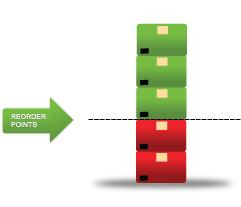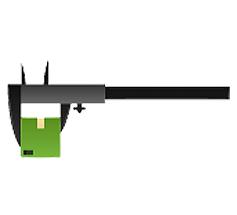What Everybody Ought to Know About Reorder Point
 Inventory management is among the most important aspects of running a production or retail company. Since having an inventory is unavoidable for production and retail companies, they need to have an inventory management system in place, which maintains the inventory level at such a point that is required for the smooth running of the business. For such a system to be evolved, the knowledge of how to replenish Inventory using techniques such as reorder point becomes quite significant.
Inventory management is among the most important aspects of running a production or retail company. Since having an inventory is unavoidable for production and retail companies, they need to have an inventory management system in place, which maintains the inventory level at such a point that is required for the smooth running of the business. For such a system to be evolved, the knowledge of how to replenish Inventory using techniques such as reorder point becomes quite significant. So what is Reorder Point?

Reorder Point is that level of inventory at which a company must place an order for the consumed materials to keep the inventory at a safe level. It signifies that point at which a replenishment order needs to be placed to ensure sufficient stock is maintained until the supplier or manufacturer replenishes the materials. The calculation of this inventory level is an important component of an inventory management system.
How to calculate Reorder Point
The simplest way to express the reorder point formula is as follows:
Reorder point = Demand during lead time + Safety Stock
The reorder point formula is often written mathematically as:
ROP = DDLT + SS
Where:
ROP = Quantity in stock that triggers a reorder
DDLT = Demand During the replenishment Lead-Time
SS= Safety Stock the quantity set to handle variability in both demand and replenishment lead-time
The formula is also often visually represented by the following diagram

As stock levels decrease over time (from A to B) they reach the Reorder point B you have set. At this point in time (B) a replenishment order for a quantity Q is raised with a due date at time C (due date based on the agreed replenishment lead-time LT).
The amount of Safety stock (SS) has been set to allow for variability in the LT Lead-time (that is delivery taking longer than planned) and variability in demand (where demand quantities are much larger than expected).
There are many other forms of reorder point formula that can be used to calculate the right time for placing a replenishment order but this one is the simplest and most basic of them.
How To Calculate Safety Stock
The calculation of reorder point is not possible unless you know a process of calculating safety stock. Since safety stock is that amount of inventory, which is going to limit the chances of a shortfall happening, it is necessary that the value of safety stock is determined very carefully. There are a number of ways of calculating safety stock. One relies on experience of demand fluctuations, delays in delivery and usage of the current safety stock levels in order to avoid a temporary shortfall situation. This approach is often referred to as a ‘gut feel’ based on experience. It is however very subjective and inaccurate.
The better way is to use a mathematical method based statistics to calculate the level of Safety Stock which focuses on the calculation of the standard deviation between actual demand and forecast demand and a service factor which is based on the customer service level required.
The actual formula is as follows:
Safety stock = Standard deviation x Service factor
This mathematical approach has the advantage of being able to be automated with the level of safety stock being based on variability of demand and the required customer service level set by management.
What are the Benefits to you?
Let's assume you achieving significant improvement in customer service while keeping your inventory investment to a minimum by introducing a Reorder Point system in your organization what will be different for you?
o Your boss will look up and listen
o You will stand out from the crowd as someone that has the company at heart and gets things done
o Your day-to-day working life easier by being better organized with a clearly defined logic to your inventory planning processes
o You will have more time to focus on what really matters
o That job promotion will be looking a lot closer
Knowledge about Reorder Point for proper management of company stock is necessary, so that the production does not get affected at any point. In this context to visit original article click here.



Comments